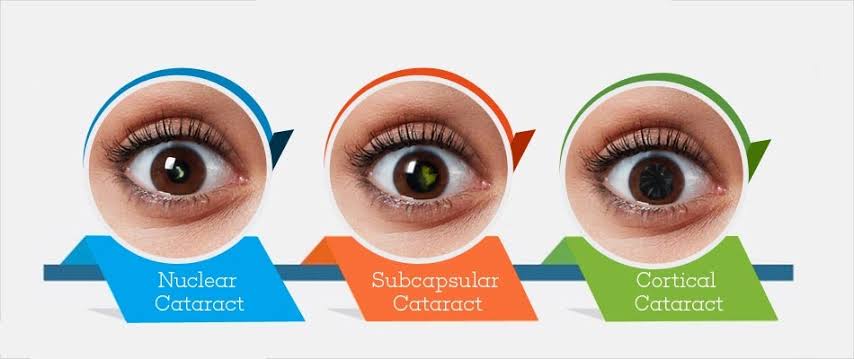Twin Forks
VIEWSletter
June 2019
CATARACT AWARENESS MONTH
Behind our pupils is a lens which helps us to bend (refract) light rays that enter the eye to help us see. This lens should be clear. If cataracts are present, the lens will be cloudy like looking through foggy glass. The world becomes hazy, blurry and less colorful. While cataracts are commonly an age-related condition, some infants are born with congenital cataracts. It is also possible for young people to develop cataracts related to injury, infection or trauma.

Normal Vision

Vision with Cataracts
Photo Credit: urmc.rochester.edu
WHAT CAUSES CATARACTS?
The lens inside the eye is mostly made of water and protein and is arranged in a way that keeps the lens clear and lets light pass through it. As we age, the protein may clump together and start to make a small area of the lens cloudy. Over time, it may grow larger and cloud more of the lens, which makes it hard to see. Besides aging, other factors that may cause cataracts are:
- Smoking
- Ocular & Systemic Diseases
- Obesity
- Hypertension
- Diabetes
- Ultraviolet Radiation
- Medications
- Alcohol Consumption
- Family History
TYPES OF CATARACTS

Photo credit: medindia.net
- Nuclear Cataracts are the most common type of age-related cataracts caused by the hardening and yellowing of the lens over time. “Nuclear” refers to the gradual clouding of the central portion of the lens called the nucleus. These types of cataracts progress slowly and does not affect vision for many years.
- Subcapsular Cataracts begin as a small cloudy area at the back of the lens. They can interfere with reading and create “halo” effects around lights. People who use steroids, have diabetes or nearsightedness may develop this type of cataract. Subcapsular cataracts develop very quickly and can be noticeable within months.
- Cortical Cataracts develop within the lens’ cortex, which is the outside edge of the lens. This type of cataract forms when the water content of the lens changes and creates fissures, which can cause light that enters the eye to scatter creating problems with glare, depth perception, contrast and blurred vision.
PREVENTION
We may not be able to completely prevent cataracts from forming but there are a few ways we can help stop them from progressing. A few ways are:
- Diet Habits: Food plays a role in achieving optimal eye health. Make sure you are getting your daily dose of greens like broccoli, brussel sprouts, asparagus & spinach (just to name a few). Stay away from processed foods and foods high in sugar, which are known to stimulate cataract growth.
- Avoid Smoking: Everyone is aware of the harmful effects of smoking for the heart and lungs but fail to comprehend the effects of smoking on the eyes. When you smoke, the good chemicals in your body are consumed which in turn encourage the production of more harmful toxins that can cause cataracts.
- Wear Sunglasses: UV Rays damage the proteins found within the lens of your eyes. When choosing a pair of sunglasses, make sure to pick the one offering 99%-100% protections against UVA and UVB Rays. Using sunglasses will lower your risk of getting cataracts.
- Diabetes Control: Keeping your blood sugar levels under control play an important part in deferring cataract formation. When your blood sugar is high the eye tends to swell. The lenses in our eye convert blood sugar into sorbitol and if its over accumulated, your quality of vision starts deteriorating and the chances of cataract formation rises.
- Comprehensive Eye Examinations: It is very important to get our eyes checked regularly to detect any potential diseases or cataracts from forming. Yearly dilated eye examinations are important so that your eye care physician can monitor from year to year any changes happening in the retina.
Schedule your comprehensive eye examination with us today! 631-740-9384



